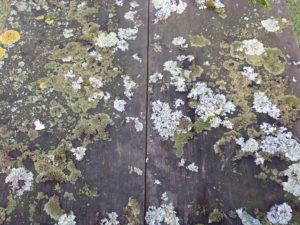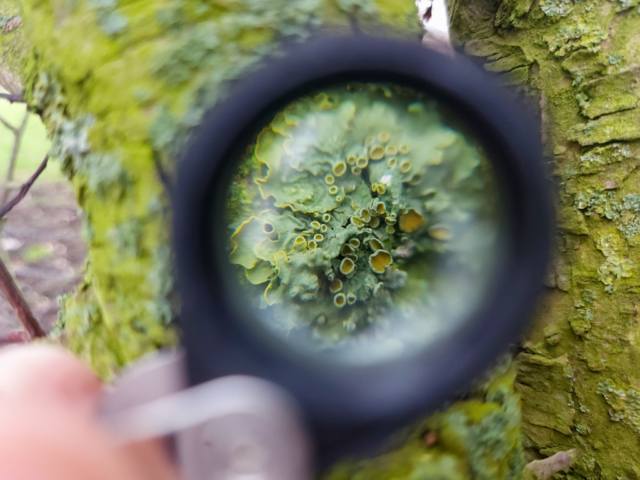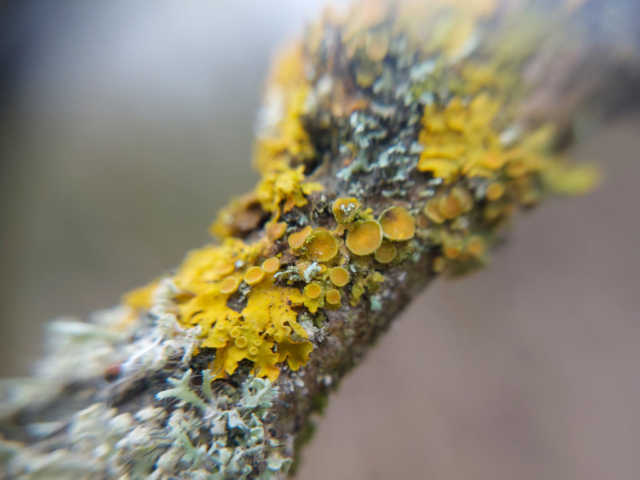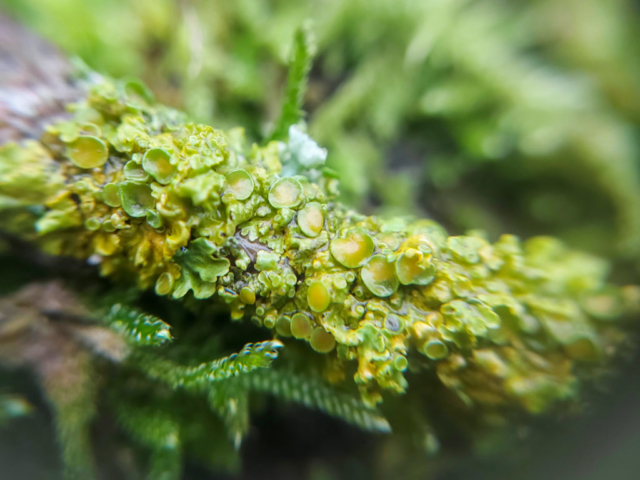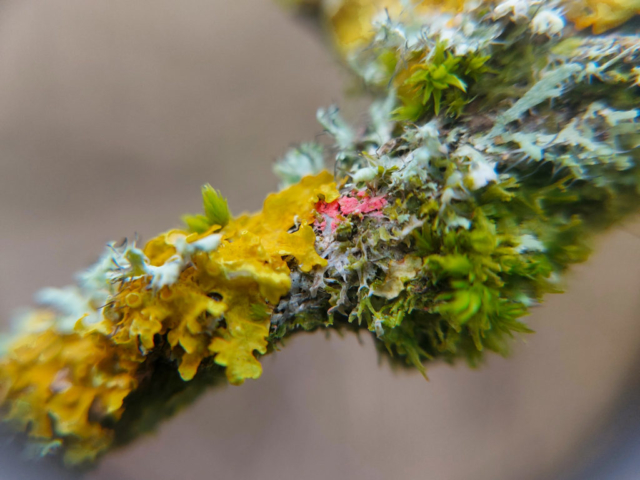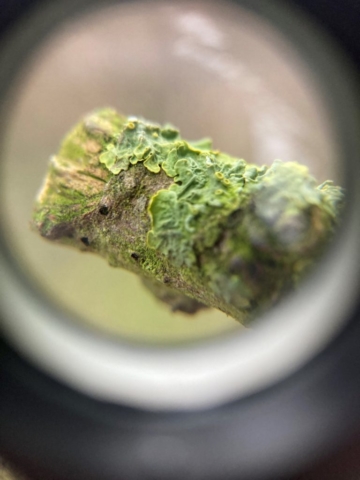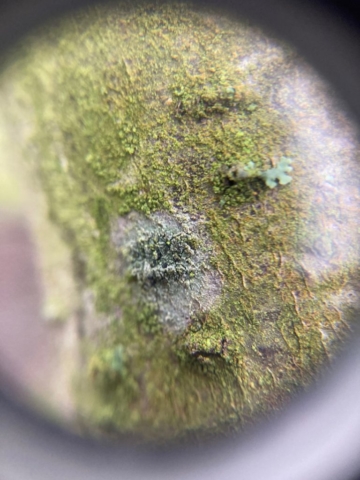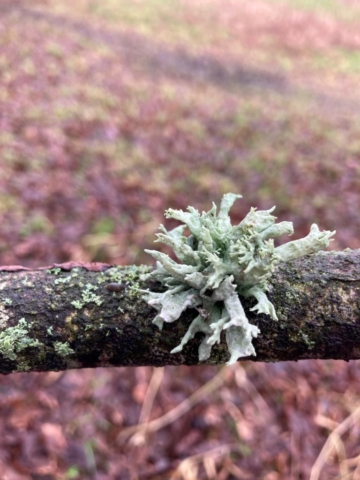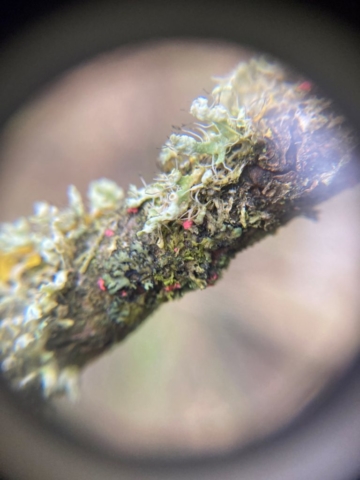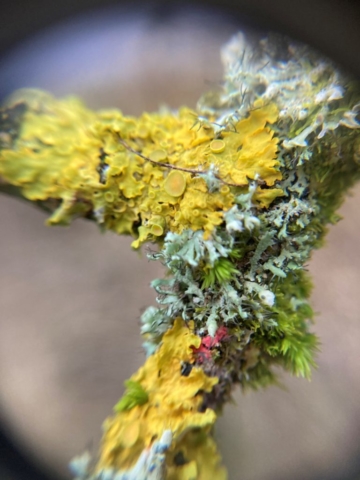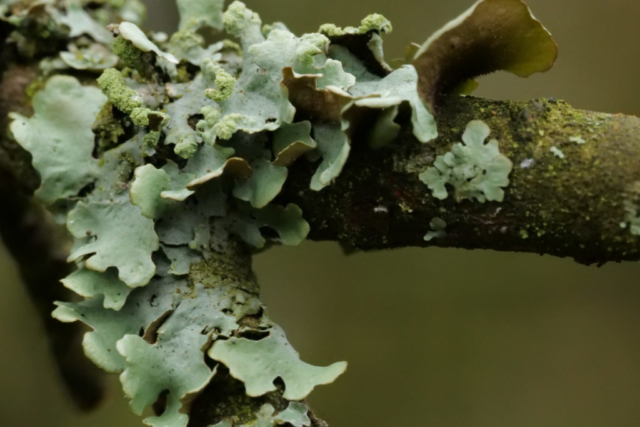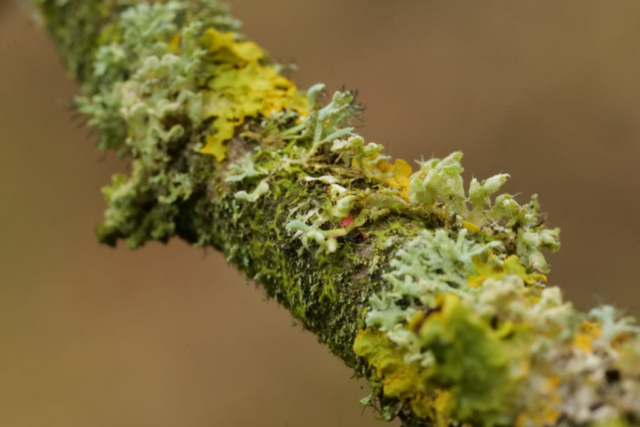Caz and I recently ran an introduction to lichens session for the first year students on the Wildlife and Media B.A. at the University of Cumbria’s Brampton Road Campus, Carlisle. We walked initially along Tarraby Lane, lined with beech trees which cast a deep shade for much of the year. This makes it hard for lichens to grow, so leafy lichens were few here and very small, with crustose and leprose (powdery) species dominating. There was also evidence of nitrogen pollution based on which species were present or absent. The damp wood at the end of the lane had more light and was perhaps better sheltered from pollution, so there was a greater range of lichen growth forms and species seen, including the shocking pink lichenicolous fungus Illosporiopsis christiansenii, one of the fungi which specialise in living on/in particular lichens. This one’s preferred habitat is the lichen genus Physcia.
This is what the students said about the day, and their photos are below:
I loved learning more about lichen. I’ve been interested in fungi for years now but never really thought to look at their wonderful symbiotic existence as lichens. An alga, a bacterium and a fungus – it really is fascinating! Staring at the little blue-grey growths on the sides of trees was quite eye-opening. I’d never spent the time to notice how detailed they are. Some were bumpy with protruding cup-like structures, others flat so flat they looked like dust, on branches some stuck out like coral. What I found the most exciting was learning that there are minute coral-pink fungi growing on the surface of some of the lichen. Tiny little fungi piggybacking on another fellow fungus in a completely altered symbiotic state! Honestly, what’s not to love?
Nathan Greening
I really enjoyed learning about lichen id, before I never really gave them much thought, but being able to identify key features of a habitat due to the massive variety of the group is a great fieldcraft skill, and can tell me things about the biodiversity which may not have been so obvious otherwise.
Daniel Peters
We really enjoyed it too: it got us to go and look at somewhere we otherwise wouldn’t (and make 80-odd records for the BLS database). I won’t forget the lichen-rich litter bin in front of the campus – see below! Thank you to Alex Playford, the course tutor, for organising it.
Pete Martin and Caz Walker
Photos by Daniel Peters
Photos by Issy Drake
Photos by Nathan Greening
Photo by Pete Martin
